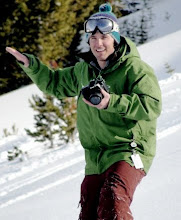Tuesday, March 31, 2009
Hermetic Tradition
Friday, March 27, 2009
A glimpse into my paper
The Memory, Imagination, and Soul of Mythtelling
Sean Kane writes in his novel Wisdom of the Mythtellers “[…] myths were not merely flights of the imagination; they were flights of the spirit, with the narrative acting as the conduit of supernatural energies summoned and made present by story, and the mythteller acting as the conductor of the souls of the listeners” (104). But why did mythtellers control such power? Paraphrasing Aristotle, Francis Yates writes “memory…belongs to the same part of the soul as imagination; it is a collection of mental pictures form sense impressions but with a time element added, for the mental images of memory are not from perception of things present but of things past” (33). In an oral tradition, storytellers held the key to personal development, morally, socially, and spiritually. They molded the youth of the tribe. They taught future leaders, future shamen, and future farmers the knowledge needed to survive in a threatening world. Stories capture the imagination, and according to Aristotle, imagination connects with memory. Both memory and imagination lie in the soul and as a result, the storytellers guiding the soul become the single greatest influence on the development of the mind.
Myths teach people how to interact with the world. “Exchange with the world is made at the mouth, nose, ears, eyes, anus, sexual organs, and the skin itself” (Kane 103). Before print, myths were used to teach children about poisonous berries, the weather, planting crops, and medical uses for plants. These myths appealed to the imagination as colorful characters acted as the guinea pigs of the natural world. For example excess pride will cause downfall as in the story of Icarus. Because memory coexists with imagination in the soul, myths remain in the collective consciousness of the tribe continuously teaching the important lessons of development. Initially, these stories guide developing souls through imagination and memory however, the mythteller’s true gift extends beyond practical knowledge. The storyteller and his myths play a crucial part in the development of knowledge.
Paraphrasing Plato, Yates writes:
The Phaedrus is a treatise on rhetoric in which rhetoric is regarded, not as an art of persuasion to be used for personal or political advantage, but as an art of speaking the truth and of persuading hearers to the truth. The power to do this depends on a knowledge of the soul and the soul’s true knowledge consists in the recollection of the Ideas. Memory is not a ‘section’ of this treatise as one part of the art of rhetoric; memory in the Platonic sense is the groundwork of the whole. (37)
Plato’s theory of forms states that all knowledge comes hardwired into the brain upon birth. Accessing this information requires little more than the proper thought or more specifically, proper rememberence. Truth depends on the knowledge of the soul and its two main aspects, memory and imagination. If truth lies in the soul, then the person responsible for developing the soul holds the key to knowledge. Enter the mythteller and his true purpose in mythtelling. Because myths develop the memory and imagination, they offer the gateway to not just practical knowledge but all knowledge of the past, present, and still to come. Cicero argues for the power of memory and imagination, “assuredly nothing can be apprehendend even in God of greater value than this … Therefore the soul is, as I say, divine, as Euripides dares say, God …” (Yates 47). Thus, the power imparted by an oral mythteller through his stories surpasses the power of god. Stories that teach what is, what was, and what will be empower a human with the divine, which explains why religion roots in myth and storytellers become demi-gods. After Plato and Aristotle, figures appear scattered through history who realize the power in stories, soul, memory, and imagination like Camillo, Lull, and Bruno, however the mythteller tradition has faded in the modern era. Yet, even today, residual orality and residual mythtelling remains.
The residual influence of the oral storytelling tradition, though not as formal and reveared, appears in childhood development today. Countless studies indicate that exposing young children to aural stimulus aids development. Reading fairytales, listening to classical music, and speaking other languages work in a similar fashion today as myths did thousands of years ago. “Sound is thus a unifying sense,” writes Walter Ong in Orality and Literacy “[…] knowledge is ultimately not a fractioning but a unifying phenomenon, a striving for harmony. Without harmony, an interior condition, the psyche is in bad health” (71-72). “Sound […] exists only when it’s going out of existence” (Ong 90). It is up to the imagination to comprehend something that only exists instantaneously. The imagination must connect a sound to a concrete object or visualize a sound as an action. While the imagination processes sound, memory stores it and the soul critiques the whole experience. Reasonably, exposure to aural stimulus begins the development of the “unifying phenomenon” called knowledge. Knowledge, that is, according to Plato, a product of the workings of the imagination, the memory, and the soul.
